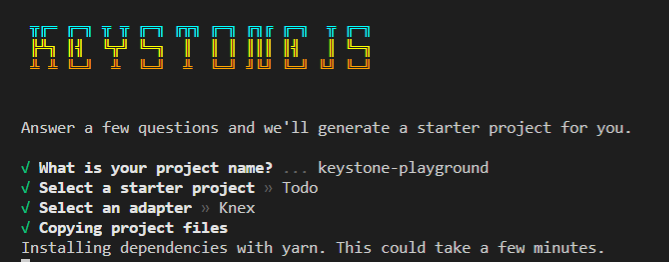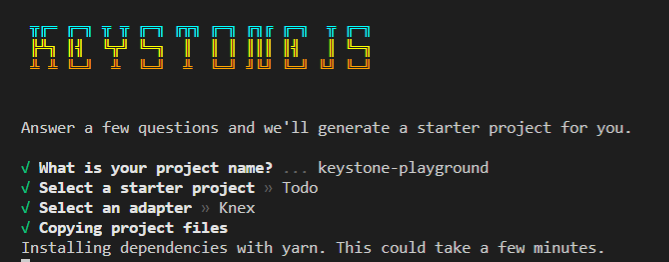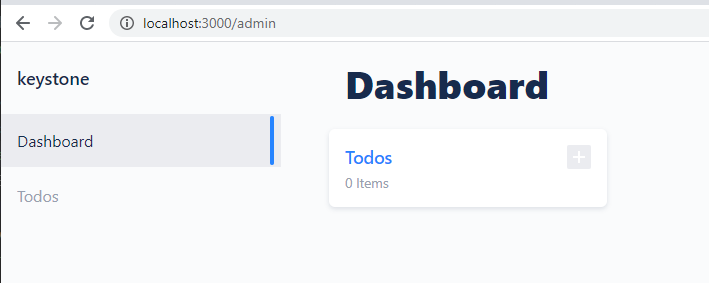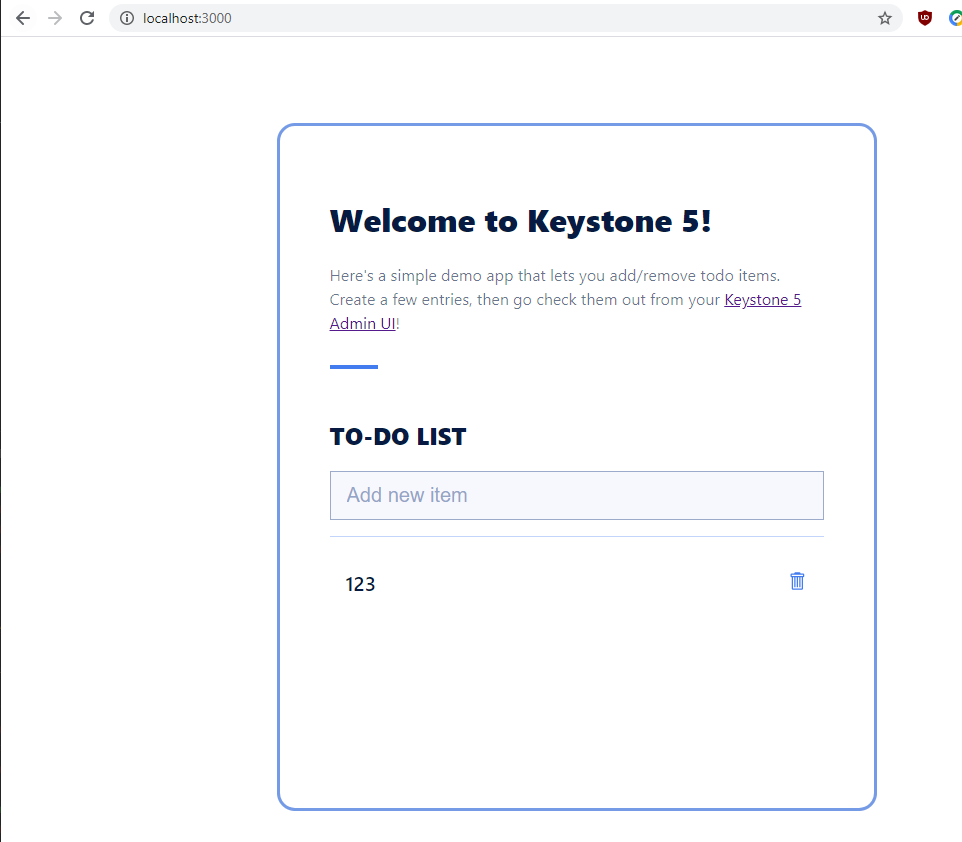KeystoneJS 5 Quick Review

I have recently started on a little project to organise the quotes that I have collected in years of reading (see kindle-citation-extractor). I originally got my quotes into Airtable but I quickly hit the limit for the free tier.
I figured that it would be great if I could develop a simple database with a simple user interface. Ideally I would not want to implement the basic CRUD views and so I had a look around for tools that can generate simple UIs for databases. My initial search revealed Keystone and Strapi.
I really liked the looks of KeystoneJS (Version 5) since it appears simple and clean. In this article, I will first document my experiences with the Getting Started example for KeystoneJS and conclude with my first impressions and comparison to similar solutions.
Getting Started
After some browsing around, I decided to follow the getting started guide from the Keystone documentation.
I am particularly interested in running Keystone with Postgres, so to get my local example running, I quickly spun up a Postgres server using Docker:
docker run --name keystone-pg -e POSTGRES_PASSWORD=password -d -v db:/var/lib/postgresql/data -p 5432:5432 postgres
(db-start.sh)
Then I configured the keystone project as per instructions:
yarn create keystone-app keystone-playground
Provided answers for the prompts:

Prompts for Keystone Project initialisation
Then I connected to the Postgres instance in Docker and created a keystone table:

Create keystone database
And finally run the example:
DATABASE_URL=postgres://postgres:password@localhost:5432/keystone && yarn dev
Unfortunately, loading the AdminUI then resulted in the following error:
GraphQL error: select count(\*) from "public"."Todo" as "t0" where true - relation "public.Todo" does not exist
There appears to be an open issue for this already: Trouble running starter
I was able to fix this issue by modifying index.js as follows:
...
const keystone = new Keystone({
name: PROJECT_NAME,
adapter: new Adapter({
dropDatabase: true,
knexOptions: {
client: 'postgres',
connection: process.env.DATABASE_URL,
}
}),
});
...
Adding the dropDatabase option here seems to force Keystone to create the data in the database upon startup.

Keystone example
The interface on localhost:3000 is also up and running:

Keystone 5 Example To Do list App
Quick Review
Based on looking around the documentation and my experiences with the sample app, my observations for Keystone JS 5 are as follows:
- KeystoneJS 5 appears very modern, with excellent capabilities for GraphQL
- Based on my experiences with the Getting Started example, it seems that the documentation for KeystoneJS leaves some things to be desired.
- I like how lightweight KeystoneJS feels. It runs fast and the code to configure it seems very straightforward and simple.
- A few lines of declarative code can yield impressive outcomes, such as a fully featured GraphQL API and a nice admin interface.
- Seems like it is possible to deploy Keystone in Serverless environments, see Serverless deployment using Now.
- KeystoneJS does not manage migrations when the data model is changed (see this comment). This requires to create any additional lists and fields manually in the database. Here an example how this can be accomplished using Knex migrations.
Potential alternatives for KeystoneJS are:
- Strapi: Very similar to Keystone but based on a REST API first (GraphQL available as a plugin). Allows creating and editing table schema using the Admin UI. Overall it is more of a CMS that KeystoneJS.
- Prisma: Prisma is closer to traditional ORM tools than KeystoneJS. The recently released Prisma Admin is similar to the Admin interface of KeystoneJs. Prisma offers a client library whereas KeystoneJS depends on clients interfacing with the data through the GraphQL API.
Overall I still believe that KeystoneJS is a viable technology for my use case. My biggest concern is around migrations; I believe it may be quite difficult to orchestrate this easily across development, test and production system. I will probably continue to poke around a bit more in the KeystoneJS examples and documentation and possibly try out one of the alternatives.
I have uploaded my project resulting from following the Getting Started guide to GitHub. I think it can be quite useful for complementing the existing Getting Started documentation, particularly when wanting to get started using Postgres:





